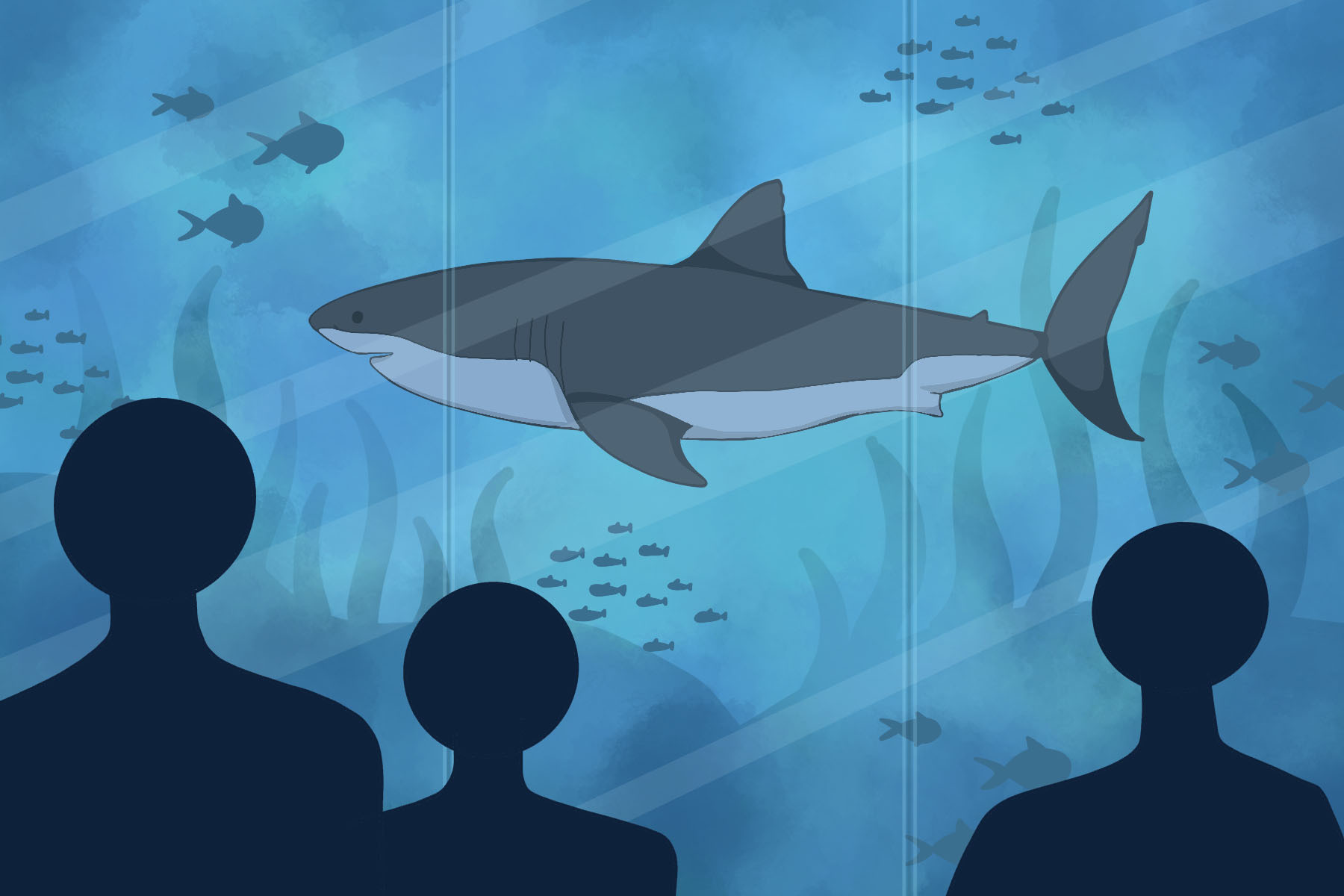Great white sharks are known for their impressive size, intimidating speed and frightening rows of teeth. Despite their vicious portrayal in movies such as “Jaws” and “The Shallows” — or maybe because of it — people are inherently curious about these incredible creatures. Due to their popularity, it wouldn’t be a stretch to assume that if great white sharks were put on display in aquariums and marine parks, it would dramatically affect attendance in a positive way. So how come aquarium tanks around the world are free of great whites?
Well, it’s not for a lack of trying. For decades, aquariums have attempted to get the world’s largest predatory fish in their exhibits, but every attempt has failed. Between the ‘70s and ‘90s, many aquariums pulled together a huge number of resources to try to capture great white sharks, but there were too many complications. The sharks refused to eat, were difficult to transport and injured themselves during transportation, with many of them dying shortly after arrival — the longest lasted only six months. Many aquariums decided the expense wasn’t worth the payoff and just stopped trying. Let’s explore the many other reasons why great whites are not found in aquariums today.
They Are Hard To Capture
Great white sharks are huge; the biggest can reach up to 20 feet long. Their size may be part of their appeal, but it is one of the things that makes capturing them extremely difficult. Special tanks have to be designed to accommodate their large, torpedo-like bodies. These tanks are very expensive to make and only the aquariums that dominate the industry are even able to afford them. Their size is also a reason why they tend to get hurt during the capturing process. These injuries only seem to worsen when they are relocated to an aquarium tank, which eventually leads to many of them dying.
They Are Difficult To Transport
Once you manage to get a large shark into a large transport tank, the struggle does not end. Great whites need water to constantly pass through their gills in order to obtain oxygen, which is a process called ram-ventilation. This is why great whites cannot be captured in nets. Specially designed open water panel tanks are required, which are large enough to allow sharks to breathe and minimize injury. However, these huge tanks are difficult to transport over large bodies of water — from the regions the sharks are found to aquarium tanks. Considering the fuel and mileage, this is an arduous and costly task.
They Need More Space
Not only do great white sharks need lots of space during transport, but their new habitat in the aquarium also needs to mimic the open ocean. Sharks are accustomed to roaming the ocean up to 50 miles a day. Many aquariums display nurse sharks, sand tiger sharks and zebra sharks in smaller tanks without too many difficulties because these sharks wade the ocean surface. On the other hand, great whites are used to exploring a larger and deeper terrain. This is why an enormous, expensive aquarium tank is needed, because they tend to hurt themselves in smaller tanks.
They Refuse To Eat
Great white sharks are hunters in the wild. This creates a challenge for zookeepers because in many cases, these sharks will refuse to eat the food served to them by humans. Foods they enjoy, like sea otters and other sea mammals, are considered highly endangered and therefore are difficult to obtain in bulk lawfully. Sharks also primarily eat live prey, and live feeding is not exactly audience-friendly. They enjoy the thrill of the hunt and become depressed when restricted from doing so.
They Injure Themselves
Sharks are nomadic animals, so keeping them in confined spaces does not bode well. Many of them aggressively hit aquarium tanks, trying to break through the walls or glass, even at the expense of their own well-being. They can hurt themselves so badly that many of them die from their own injuries. Some experts think glass affects their electroreception system and that this is why they react this way, while others think this behavior can be attributed to depression. However, plenty of scientists agree that captivity has many negative effects on all animals; it’s not natural to restrict an animal that has evolved to wander large spaces.
It Is Outdated
Considering all we know now about how captivity affects animals, people and zookeepers alike should be against putting creatures on display. Edge Innovations is a great company that could revolutionize the zoo industry and how we interact with animals; they are trying to persuade zoos and aquariums to display robotic animals rather than real ones. These animatronics are quite cost-effective in the long run, don’t require veterinary care or food and — best of all — provide a more humane experience.
It Is Inhumane
The last and final reason why great white sharks aren’t kept in aquariums today is because it’s inhumane. This certainly has not stopped humans before, but the sheer fact that these sharks are extremely expensive to capture and maintain, with many ending up dying shortly after being introduced to captivity, has forced humans to leave great whites in the ocean. Perhaps they are just simply not meant to be held in captivity — or any animal, for that matter. This is a hard lesson that the general public learned in the 2013 exposé “Blackfish.” This damaging documentary shined a light on the mental collapse of SeaWorld’s captive killer whales, and considering SeaWorld’s drop in sales after the release of the film, consumers think it’s unethical too.
Sharks are truly fascinating creatures: They are beautiful, frightening and intelligent. There are many reasons why sharks aren’t in aquariums today, including cost, payoff value and logistics. But the most poignant reason they aren’t in aquariums today is because they simply don’t belong there. Perhaps the best thing we can do is to leave them where they do belong: the ocean.















